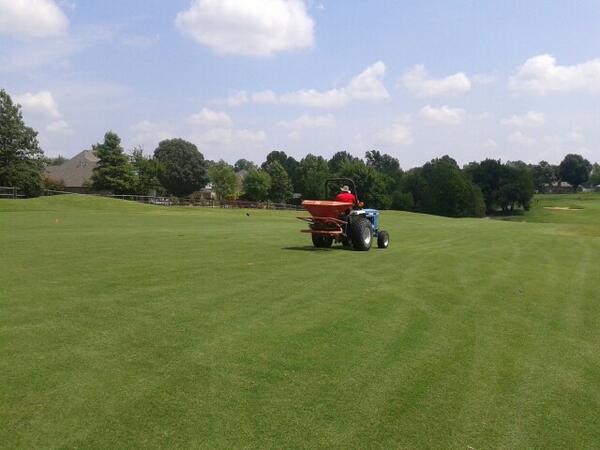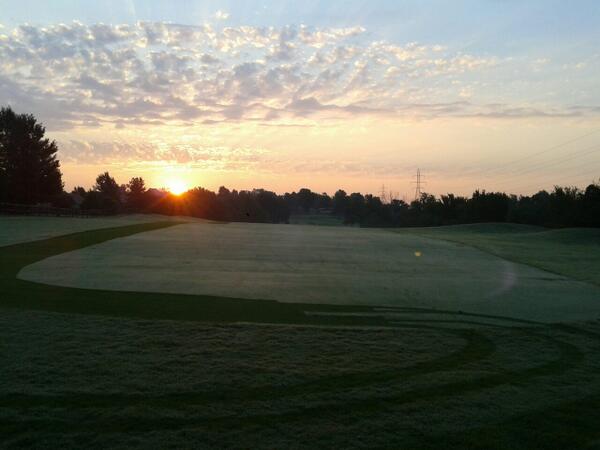 |
| Greens roller improves playability while reducing turf stress |
A recent blog post by fellow superintendent Chris Tritabaugh at Hazeltine National Golf Club, had me thinking about our own strategies for Bentgrass survival. I've included a link to his blog
here. I believe his main point in that post was that in order to provide the best conditions year round, sometimes less is more. Meaning give the turf a break so that we don't compound the stresses that the turf is already dealing with.
No matter what part of the country you live in, summer brings many challenges when trying to maintain Bentgrass putting greens. Heat, drought, excess rainfall, disease, foot traffic, and insects all conspire against the turf and has it fighting for it's life. We, the agronomy department, must do our part and carefully help the plant by giving it just what it needs, at just the right times. Solid tine aeration, timely fertilizer and pesticide applications, hand watering, and routine light applications of topdressing all help keep the turf healthy and ready to deal with the stresses of summer. Some other practices we utilize during the intense summer heat include: raising the height of cut, using smooth rollers, instead of grooved, on the cutting units, rolling greens instead of mowing, and using greens fans to improve air flow.
 |
| Light apps of sand dilute thatch, smooth and firm surface |
All of these practices are meant to lessen the amount of stress the plant is forced to endure. Once more seasonal weather sets in, the agronomy staff will make further adjustments and the practices employed will favor improving playability and not just survival.
 |
| Greens fans improve air flow |
 |
| Syringing allows staff to carefully manage soil moisture |













